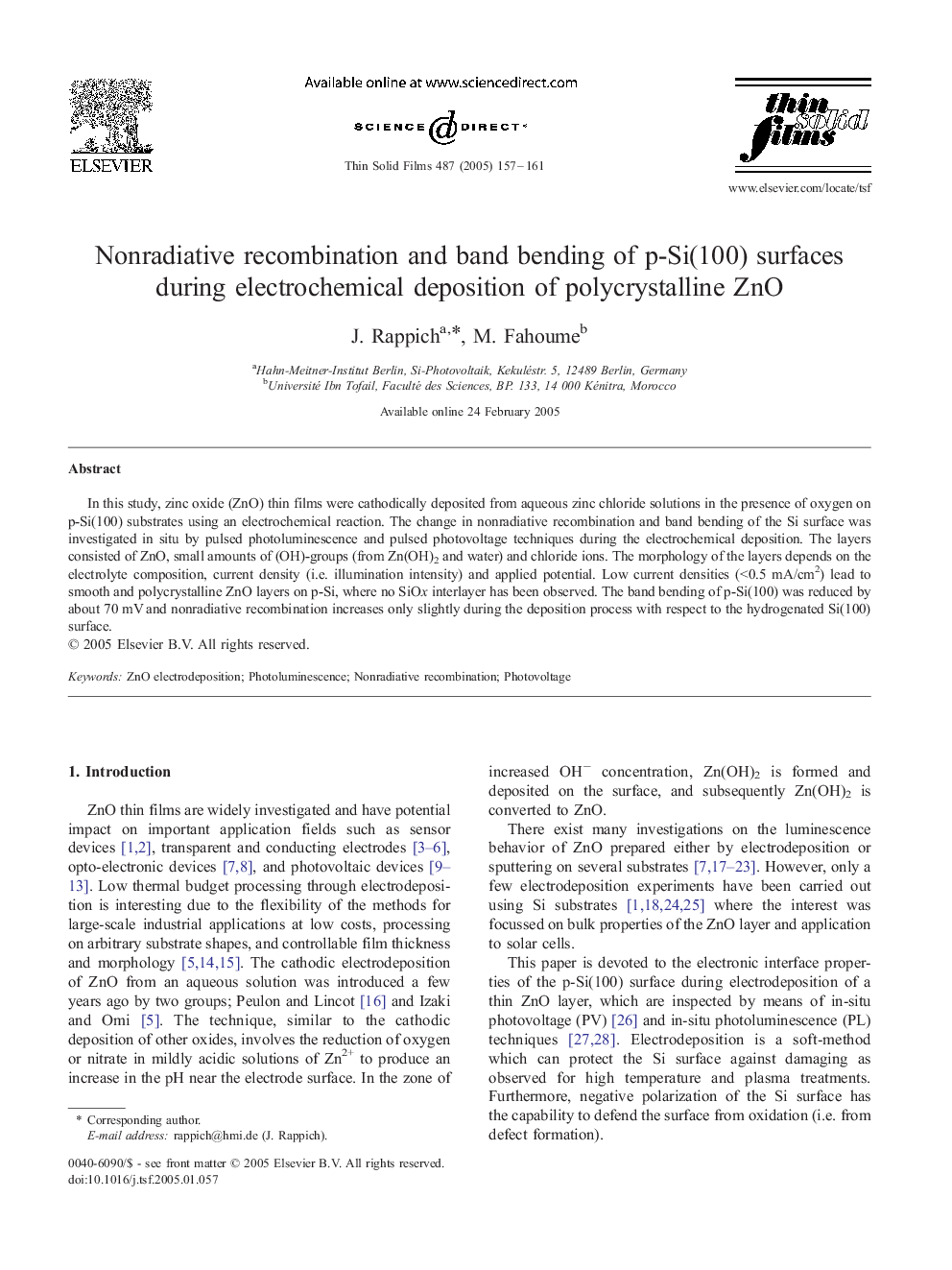| Article ID | Journal | Published Year | Pages | File Type |
|---|---|---|---|---|
| 9812385 | Thin Solid Films | 2005 | 5 Pages |
Abstract
In this study, zinc oxide (ZnO) thin films were cathodically deposited from aqueous zinc chloride solutions in the presence of oxygen on p-Si(100) substrates using an electrochemical reaction. The change in nonradiative recombination and band bending of the Si surface was investigated in situ by pulsed photoluminescence and pulsed photovoltage techniques during the electrochemical deposition. The layers consisted of ZnO, small amounts of (OH)-groups (from Zn(OH)2 and water) and chloride ions. The morphology of the layers depends on the electrolyte composition, current density (i.e. illumination intensity) and applied potential. Low current densities (<0.5 mA/cm2) lead to smooth and polycrystalline ZnO layers on p-Si, where no SiOx interlayer has been observed. The band bending of p-Si(100) was reduced by about 70 mV and nonradiative recombination increases only slightly during the deposition process with respect to the hydrogenated Si(100) surface.
Related Topics
Physical Sciences and Engineering
Materials Science
Nanotechnology
Authors
J. Rappich, M. Fahoume,
